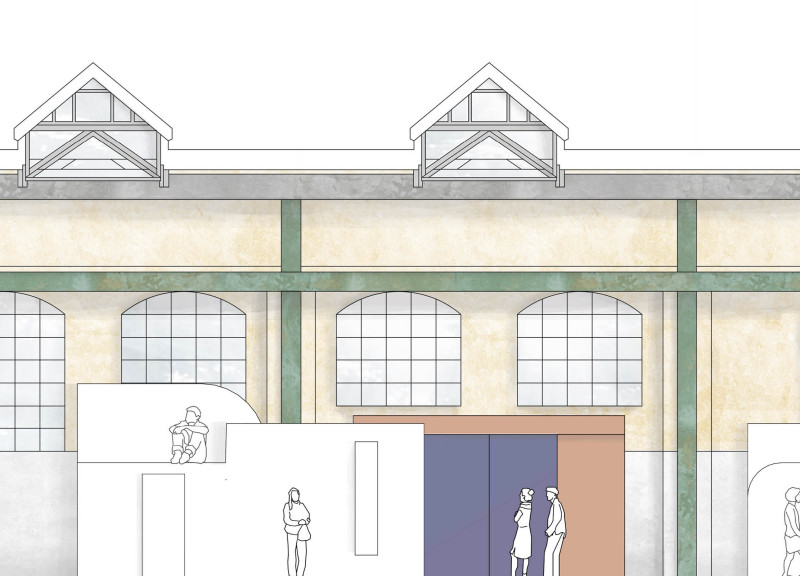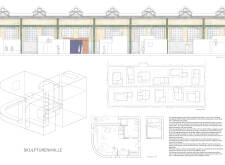5 key facts about this project
SKULPTURENHALLE is located in Zurich and aims to address the current issues of housing shortages in urban areas. The design shifts the focus towards a microhome typology that converts a former industrial hall into a lively community space. This concept emphasizes the reuse of existing architecture and creates an environment that accommodates a mobile lifestyle while providing residents with the privacy they need.
Design Concept
The project centers on the idea of adaptive reuse, where small, temporary buildings are situated within the shell of a larger industrial structure. By incorporating these units, the design promotes a collaborative living atmosphere. It encourages social interaction among residents while ensuring that personal spaces are well-defined. Through this strategy, the aim is to redefine how people experience urban living, ultimately fostering community bonds.
Spatial Organization
The arrangement of the small houses generates a network of narrow passageways that invite exploration. These corridors echo traditional urban layouts, encouraging movement and interaction among residents. Open communal areas are placed between the buildings, serving as social hubs where neighbors can gather. This layout not only enhances a sense of community but also transforms the industrial hall into a shared living room, contributing to a more connected lifestyle.
Architectural Expression
The visual language of SKULPTURENHALLE features varied geometric forms that stand in contrast to the surrounding industrial context. These abstract volumes create a dynamic silhouette, resembling large sculptures that add character to the space. Their different heights and roof shapes help to define distinct zones within the hall. This thoughtful arrangement balances privacy with opportunities for residents to engage with each other.
Design Detail
One notable aspect of the design is the roofscape, which acts as a bridge between different areas of the project. This elevated terrain reinforces the connectivity and accessibility of the communal space, making it inviting for both residents and visitors. It provides an opportunity for outdoor activities and gatherings, enhancing the overall experience of living within a vibrant urban environment.



















































